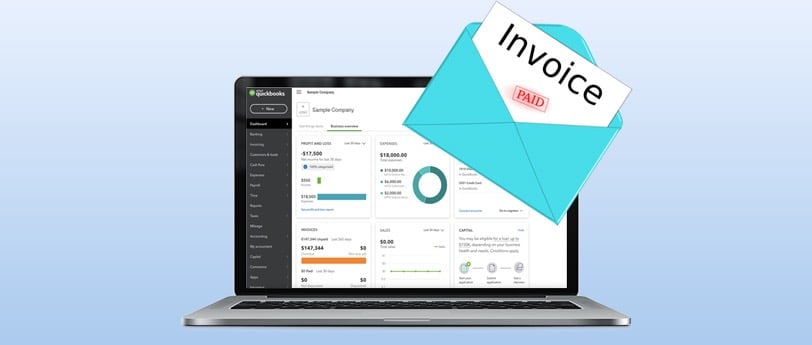📞 (858) 308-1100
✉️ contact@veslav.com
Proper Workflow for Invoicing and Receiving Payments in QuickBooks Online
2/22/20252 min read


Getting paid on time starts with having a clear and efficient invoicing process. In QuickBooks Online (QBO), following a structured workflow helps ensure invoices are created correctly, payments are received properly, and your books stay accurate.
In this post, we’ll cover:
How to create and send invoices the right way
Best practices for tracking and applying payments
Common mistakes to avoid
Step 1: Setting Up Your Invoicing Process
Before you start invoicing, ensure your QuickBooks settings are properly configured:
➤ Go to Settings → Account and Settings → Sales
➤ Enable Custom Transaction Numbers if you want manual invoice numbering
➤ Turn on Reminders and Online Payments (if applicable)
➤ Customize your invoice template under Custom Form Styles
Having the right settings in place helps streamline your workflow and improve cash flow.
Step 2: Creating and Sending an Invoice in QBO
📌 To Create an Invoice:
Navigate to + New → Invoice
Select the Customer
Enter the Invoice Date and Due Date
Add Products/Services, ensuring proper income account mapping
Apply any applicable Sales Tax (if enabled)
Choose Payment Terms (Net 15, Net 30, etc.)
Review and Send the Invoice via email or print for mailing
💡 Tip: If you use QuickBooks Payments, customers can pay directly from the invoice, making collection easier!
Step 3: Tracking and Recording Payments
Once a customer pays, it’s important to properly record the payment to avoid issues like duplicate income or incorrect bank balances.
📌 To Record a Payment in QBO:
Go to + New → Receive Payment
Select the Customer and the Invoice being paid
Choose the Deposit To account (Undeposited Funds or Bank Account)
If partial payment, enter the amount received
Save and close
Bank Deposits:
If you use Undeposited Funds, be sure to match payments in + New → Bank Deposit when you actually deposit funds to your bank.
💡 Tip: If your bank is connected to QBO, you can match deposits in the Banking tab instead of manually entering them.
Step 4: Reconciling Payments with Bank Transactions
To keep your books accurate, always match customer payments with bank deposits.
➤ Go to Banking → For Review
➤ Find the deposit and click Match if QBO suggests a transaction
➤ If no match appears, check if payments were grouped before depositing
This ensures your income is not double-counted and your bank balances stay correct.
Common Mistakes to Avoid
Forgetting to apply payments to invoices – Payments recorded without being linked to an invoice may leave invoices marked as unpaid.
Depositing customer payments twice – If a payment is manually recorded and then automatically pulled from the bank feed, it may result in duplicate income.
Incorrectly using Undeposited Funds – If deposits go directly to the bank instead of passing through Undeposited Funds, they may not match real-life bank transactions.
How We Can Help
A well-structured invoicing and payment workflow ensures you get paid faster and keep your books accurate. We help businesses set up QuickBooks Online correctly, streamline invoicing, track payments, and reconcile bank transactions to avoid errors and financial discrepancies.
💬 Need help keeping your invoices and payments in order? Contact us today!
Veslav Consulting
Simplifying Your Finances,
Empowering Your Growth
Contact Us
Join our newsletter list
858-308-1100
© 2025 Veslav Consulting. All rights reserved.
